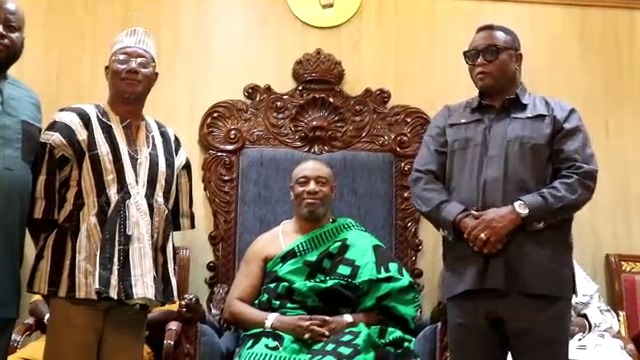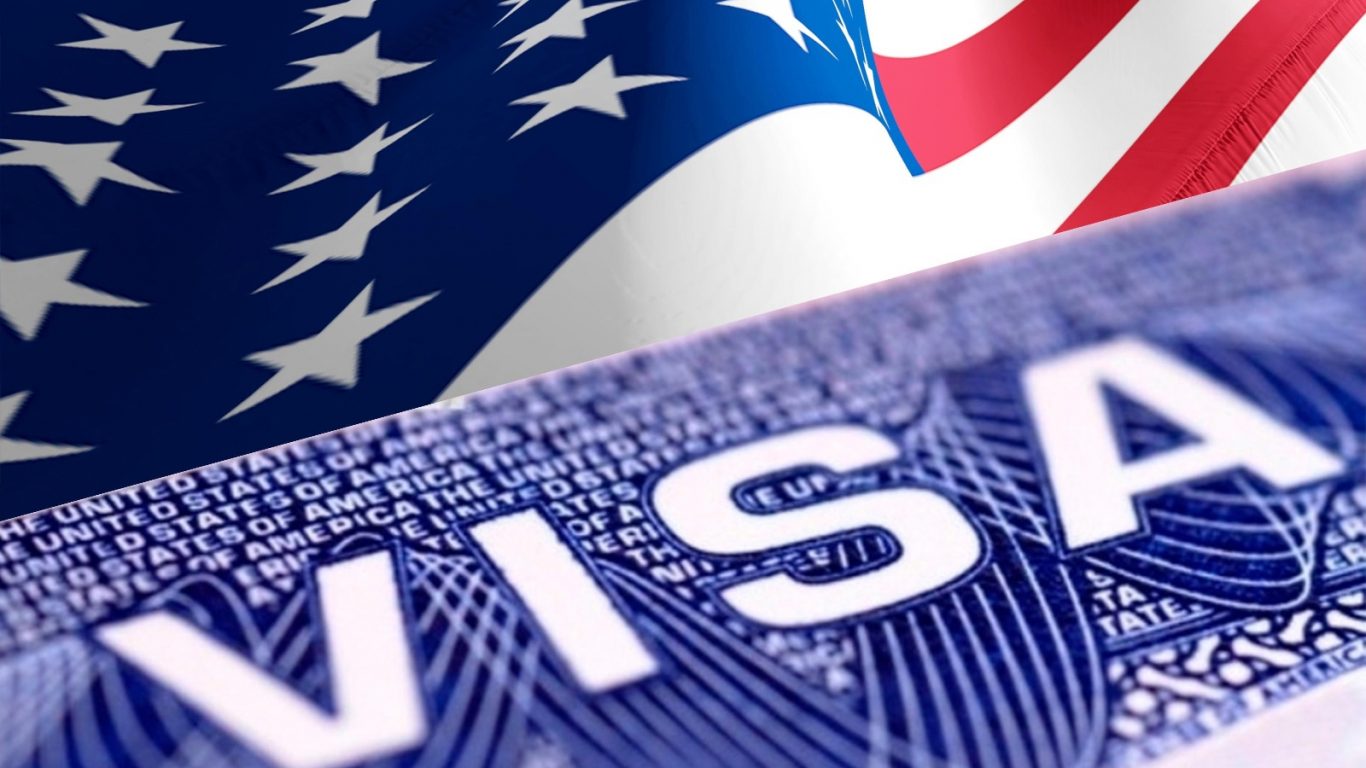Re-Imagining A ‘Gold-Ful’ ECOWAS Monetary Zone
Re-Imagining A ‘Gold-Ful’ ECOWAS Monetary Zone

In April 2024, Zimbabwe introduced a new gold-backed currency – the ZiG – as the official unit of exchange for transactions. The country’s predecessor currencies had been the Rhodesian dollar (1970 to 1980), Zimbabwe dollar (1980 to 2009), multiple-currency system (South African rand, Botswana pula, pound sterling, Indian rupee, euro, Japanese yen, Australian dollar, Chinese yuan and the US dollar from 2009 to 2019) and the Real Time Gross Settlement (RTGS) dollar, or the re-invented Zimdollar (February 2019 to April 2024) (Wikipedia).
“To ensure orderly pricing, the government will soon be introducing the necessary regulations to ensure that no exchange rate other than the official rate will be used for the pricing of all goods and services” ,announced by Finance Minister Mthuli Ncube in a statement published by Reuters. The replacement of the RTGS was occasioned by its loss of 70 per cent of value since the beginning of the year 2024.
Zimbabwe seems to have inspired one of Ghana’s presidential aspirants to follow her footprints. Vice President Mahamudu Bawumia, who is the flagbearer of the cocoa-, gold- and oil-producing West African country’s governing party, the New Patriotic Party (NPP), promised in May 2024 to stabilise his country’s faltering fiat currency, the cedi, by backing it with the country’s rich gold resources should he win the presidential election of the 7 December 2020 general polls. At a meeting with Organised Labour, Dr Bawumia was quoted by Citinewsroom.com as having said: “Ultimately, my goal is that we are going to back our currency with gold and that is where I want us to go: increasingly backing our currency with gold, because it is very easy for us to do so if you keep having the gold reserves.” Dr Bawumia added: “… That will keep a lot of stability in the exchange market,” explaining: “Because right now, we don’t have an anchor to hold the currency, but if we back it with gold, it will be very stable because its value ultimately will be reflected by the value of gold, which is very stable.”
Fiat Currency V. Commodity-Backed Money
Investopedia defines a fiat currency as “a government-issued currency that is not backed by a physical commodity, such as gold or silver, but rather by the government that issued it”. It explains that “the value of fiat money is derived from the relationship between supply and demand and the stability of the issuing government, rather than the worth of a commodity backing it.”
On the other hand, a commodity-backed currency is one whose value is equal to the intrinsic value of the unit of the commodity (gold, silver or any other fungible, durable, portable, scarce and acceptable commodity capable of storing value over a long period) backing it. While fiat currencies’ values are ensured by the faith and confidence of the people who use them, commodity-backed currencies retain the value of the precious metals backing them, since such metals rarely lose value and cannot be easily mass-produced.
Commodity-backed currencies are less susceptible to inflation and hyperinflation than fiat currencies. While central banks can print more fiat currencies at will, they cannot print gold or silver, for instance, and, thus, the stored value of those rare metals which are mined through arduous processes, cannot be easily diluted.
The only way to dilute the value of commodity-backed currencies is by adulterating the purity of the precious metals backing them. For example, adding a higher quantity of an inferior metal like copper to a unit quantity of gold, waters down the value of the precious metal. In such cases, more adulterated gold coins can be minted and used to back more paper notes. This is akin to quantitative easing in the case of fiat currencies, where central banks just keep printing more paper currencies – usually the cause of inflation and hyperinflation – at its worst.
The Gold Standard
The gold standard is a monetary system where a country’s currency or paper money has a value directly linked to gold. Countries on the gold standard agreed to convert paper money into a fixed amount of gold. This system provided a stable and predictable exchange rate for international trade, as currencies were pegged to a fixed quantity of gold.
Gold has been used as a form of currency for millennia, but the formal gold standard didn’t emerge until the 19th century. In 1717, Great Britain adopted a de facto gold standard due to Isaac Newton’s valuation of silver to gold, which led to silver coins going out of circulation (Wikipedia) (US Gold Bureau). By 1821, Britain officially adopted the gold standard, and many other countries followed suit, making it the dominant monetary system by the late 19th century (Investopedia) (US Gold Bureau).
The Classical Gold Standard Era
From 1871 to 1914, the gold standard was at its peak, with most major economies adopting it. This period saw significant global economic integration and stability, as international trade imbalances were settled with gold. However, the outbreak of World War I in 1914 disrupted the system, as countries suspended gold convertibility to finance their war efforts (Investopedia) (US Gold Bureau).
Interwar Period and the Great Depression
After World War I, countries attempted to return to the gold standard, but it was a weakened system. The Great Depression of the 1930s further undermined confidence in the gold standard, as countries struggled to maintain gold reserves amid economic crises. In the U.S., the Gold Reserve Act of 1934 nationalised gold holdings and revalued gold to stabilise the economy (Investopedia) (US Gold Bureau).
The Bretton Woods system
In the past, most of the world’s currencies were backed by gold through the U.S. dollar, courtesy of the Bretton Woods system established in July 1944, during a conference held in Bretton Woods, New Hampshire, USA. The Bretton Woods system was designed to create a new stable international monetary system post-World War II. This system replaced the previous gold standard, aiming to foster economic stability and prevent competitive devaluations and restrictive trade policies that had exacerbated the Great Depression (World Gold Council) (Federal Reserve History).
Under the Bretton Woods agreement, the US dollar was pegged to gold at $35 per ounce, while other currencies were pegged to the dollar. This system effectively made the US dollar the world’s primary reserve currency. The agreement also led to the creation of the International Monetary Fund (IMF) and the World Bank, institutions intended to monitor exchange rates and provide financial assistance for reconstruction and development (World Gold Council) (The Balance).
The system worked well during the post-war economic boom, providing the stability needed for rapid global economic growth. However, by the 1960s, strains began to emerge. Persistent US balance-of-payments deficits led to foreign-held dollars exceeding US gold reserves, undermining confidence in the dollar’s convertibility to gold. This issue was exacerbated by the economic demands of the Vietnam War and domestic spending under the Great Society programs (Federal Reserve History) (IMF).
In August 1971, President Richard Nixon announced the suspension of the dollar’s convertibility into gold, marking the collapse of the Bretton Woods system. This shift allowed currencies to float against each other, leading to a more flexible but less predictable international monetary system (The Balance) (IMF).
The end of the Bretton Woods system marked a significant shift in global economic policy, transitioning from fixed exchange rates and gold-backed currencies to the modern era of floating exchange rates and fiat money.
Currency valuation
The value of currencies on the international market is determined by a variety of factors influenced by both economic fundamentals and market forces.
1. Supply and Demand: The primary driver of currency value is supply and demand dynamics. If more people want a currency, its value rises; if fewer people want it, its value falls. Factors affecting supply and demand include trade balances, interest rates, and economic performance (Corporate Finance Institute) (WallStreetMojo).
2. Interest Rates: Higher interest rates in a country can attract foreign capital, increasing demand for its currency and, thus, its value. Conversely, lower interest rates can lead to a decrease in currency value as investors seek better returns elsewhere (Encyclopedia Britannica) (WallStreetMojo).
3. Inflation Rates: Lower inflation rates generally lead to currency appreciation because the purchasing power of the currency is more stable. Higher inflation typically depreciates a currency as it erodes purchasing power (WallStreetMojo).
4. Economic Indicators: Indicators such as GDP growth, employment rates, and trade balances are critical. Strong economic performance attracts foreign investment, increasing demand for the currency (Corporate Finance Institute) (WallStreetMojo).
5. Political Stability: Stable political environments and effective governance bolster investor confidence, leading to stronger currencies. Political instability, on the other hand, can lead to depreciation as investors seek safer assets (WallStreetMojo).
6. Geopolitical Events: Conflicts, trade disputes, and changes in government policies can significantly impact currency values. These events can lead to fluctuations as markets react to the uncertainties they introduce (WallStreetMojo).
7. Market Sentiment and Speculation: Perceptions and expectations about a currency’s future value can influence its current value. Speculation in the foreign exchange market often leads to short-term volatility (WallStreetMojo).
8. Central Bank Actions: Monetary policies, including interest rate changes and quantitative easing, can significantly impact currency values. Central banks may also intervene directly in foreign exchange markets to stabilize or adjust the currency value (WallStreetMojo) (PIMCO).
9. Trade and Current Account Balances: A country with a trade surplus often sees its currency appreciate because of the higher demand for its goods and services. Conversely, a trade deficit can lead to depreciation (WallStreetMojo).
Most currencies today operate under a floating exchange rate system where market forces primarily determine the value. However, some countries, like China, use a fixed or pegged system, tying their currency’s value to another major currency like the US dollar (Encyclopedia Britannica) (PIMCO).
A Cursory Look At Africa’s Gold Resources
Africa’s gold reserves are a crucial part of the continent’s economic landscape, with significant holdings in several countries.
1. Algeria: With 174 metric tons of gold, Algeria holds the largest gold reserves in Africa. This substantial reserve helps the country stabilize its economy and hedge against global economic uncertainties (Business Insider Africa).
2. South Africa: South Africa possesses 125 metric tons of gold reserves. Despite a decline in production over the years, South Africa remains a key player due to its large reserves and extensive mining history (Business Insider Africa) (Energy Capital & Power).
3. Libya: Libya has 117 metric tons of gold, making it the third-largest holder of gold reserves on the continent. This reserve supports the country’s economy amidst political and economic challenges (Business Insider Africa).
4. Egypt: Egypt holds approximately 80.73 metric tons of gold. This reserve is part of the country’s strategy to bolster its financial stability and international economic standing (Business Insider Africa).
5. Morocco: Morocco’s gold reserves stand at 22.12 metric tons, reflecting its efforts to diversify its economic resources (Business Insider Africa).
6. Nigeria: Nigeria has 21.37 metric tons of gold reserves, valued at around $1 billion. The country has been actively increasing its gold reserves to diversify its economy and reduce reliance on oil exports (Business Insider Africa) (Forbes Africa).
7. Mauritius: With 12.44 metric tons, Mauritius focuses on gold as part of its economic diversification strategy (Business Insider Africa).
8. Ghana: Ghana holds 8.74 metric tons of gold. The country is also the leading gold producer in Africa, with production playing a significant role in its economy (Business Insider Africa) (Energy Capital & Power).
9. Tunisia: Tunisia’s gold reserves amount to 6.84 metric tons, contributing to its financial security and economic policies (Business Insider Africa).
10. Mozambique: Mozambique rounds out the top ten with 3.94 metric tons of gold reserves, highlighting its growing role in the African gold market (Business Insider Africa).
These reserves not only provide economic stability but also represent a strategic asset for these countries as they navigate global economic fluctuations and strive for sustainable development.
The Eco
As part of efforts to foster economic integration and stability within the region, the Economic Community of West African States’ (ECOWAS) have been chasing a long-overdue dream of adopting a common currency, the eco. The initiative aims to replace the CFA franc used by eight West African countries and the various national currencies of other ECOWAS member states.
The idea of a single currency for ECOWAS was first proposed in the 1980s, but significant steps were only taken in the 2000s. The West African Monetary Zone (WAMZ) was established in 2000 to fast-track the adoption of a common currency among its six member states: The Gambia, Ghana, Guinea, Nigeria, Sierra Leone, and later Liberia (Wikipedia) (Brookings).
In December 2019, the leaders of the West African Economic and Monetary Union (WAEMU) announced their intention to rename the CFA franc to the Eco, targeting a 2020 launch. However, this unilateral decision sparked controversy and highlighted divisions within ECOWAS, particularly between French-speaking and English-speaking countries (Wikipedia) (Brookings).
Nigeria, the region’s largest economy, expressed significant reservations, insisting on meeting specific criteria and concerns about the currency’s management and its peg to the euro. As of January 2020, ECOWAS leaders decided to delay the launch of the Eco to address these issues and ensure broader consensus and readiness among member states (Wikipedia) (Brookings).
The implementation of the Eco faces numerous challenges, including meeting convergence criteria such as inflation rates, budget deficits, and debt-to-GDP ratios. As of 2020, only a few member states, like Ghana, had met these criteria in any fiscal year. Moreover, there are concerns about economic imbalances, with Nigeria’s dominance potentially skewing the benefits of a single currency (Future Africa Forum) (Mediatracnet).
Despite these challenges, the Eco is seen as a potential catalyst for enhancing intra-regional trade, reducing transaction costs, and fostering economic stability. The goal is to have the Eco in use by 2027, providing ample time for member states to align their economic policies and meet the necessary criteria (Mediatracnet).
Advantages Of A Common Currency For ECOWAS
1. Reduction in Transaction Costs and Exchange Rate Uncertainty: One of the primary benefits of a common currency is the elimination of exchange rate fluctuations among member states. This stability facilitates smoother and more predictable business transactions, which can enhance trade and investment across the region. Businesses and travellers are spared the hassles and costs associated with currency exchange, leading to increased economic efficiency (Brookings) (World Economic Forum).
2. Enhanced Price Transparency and Competition: With a single currency, price comparisons across member states become straightforward, fostering competition. This transparency can drive down prices and benefit consumers, as well as stimulate market efficiency and economic activity within the region (Brookings) (World Economic Forum).
3. Improved Economic Policy Coordination: A common currency necessitates harmonised monetary policies among member states. This can lead to better coordinated economic strategies, enhancing overall macroeconomic stability. ECOWAS countries have established convergence criteria, such as limits on budget deficits and public debt, which member states must meet, promoting fiscal discipline and economic stability (Brookings) (World Economic Forum).
4. Increased Regional Integration and Political Solidarity: A shared currency can strengthen political and economic ties among member states, fostering a sense of unity and collaboration. This can lead to more integrated regional policies and initiatives, enhancing collective bargaining power on the global stage (Brookings).
5. Attraction of Foreign Investment: A stable and predictable monetary environment is attractive to foreign investors. The Eco could potentially increase foreign direct investment in the region by reducing currency risk and fostering a more predictable economic environment (Brookings).
Backing The Eco/ECOWAS States’ Currencies With Gold
Backing the Eco with gold would be a double-win for the region, and Africa in general, as, apart from the benefits of adopting a common currency as enumerated above, a gold-backed currency also has its upsides, as spelt out at the beginning of this piece. The combined effect of the positives of these two moves could see an ECOWAS with one of the strongest and most resilient monetary zones in the world.
Even if the Eco dream fails to materialise but ECOWAS States follow the example of Zimbabwe, the region will still be replete with many stable and strong currencies that are resilient against inflation and hyperinflation. Those strong currencies will spur demand; which will, in turn, make the currencies more attractive, and, thus, more valuable on the international market and have a knock-on effect on the other aspects of the economy. In such a circumstance, ECOWAS States would stand a better chance of exporting their inflation to other countries just as the United States currently does with its high-in-demand dollar. The resulting lower inflation would mean those African countries’ citizens would have a higher purchasing power and, therefore, a better quality of life.
Backing the Eco or ECOWAS States’ currencies with gold would impose strict discipline on the central banks of those countries by discouraging quantitative easing, which almost always is a recipe for inflation.
Additionally, a stable currency backed by gold could enhance trade within the region by reducing currency risk and transaction costs. This could make ECOWAS countries more attractive to foreign investors, boosting economic growth and integration.
Furthermore, African countries would have started making better use of their gold resources for the benefit of their countries and people. This could lead to heightened intra-continental trade in gold and might even egg on the leaders of those countries to invest more into the exploration and mining of their mineral resources by themselves without relying on foreign companies who rip them off with highly lopsided extortionist agreements. Like all systems, however, a gold-backed common monetary zone would have its downsides, but those obstacles should not be the reason for not attempting to have one.























































